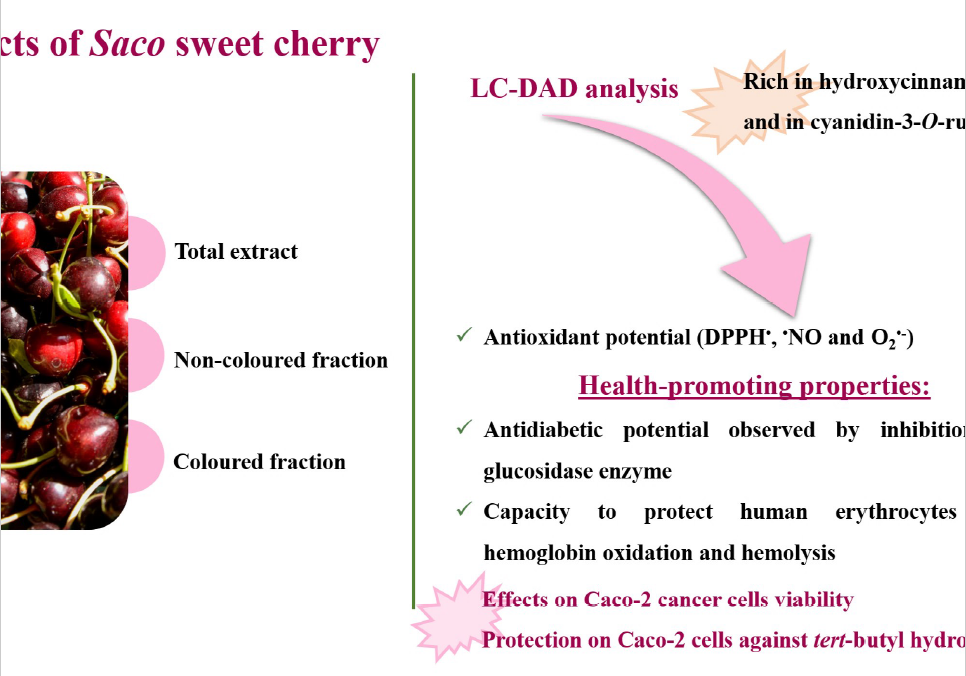This study aimed to compare three different extracts of Saco sweet cherry, namely non-coloured fraction, coloured fraction and total extract concerning phenolic composition, antioxidant and antidiabetic potential, erythrocytes’ protection and effects on Caco-2 cells. A total of 22 phenolic compounds were identified by LC-DAD. Hydroxycinnamic acids were the most predominant in both non-coloured fraction and total extract, while cyanidin-3-O-rutinoside was the main anthocyanin found in the coloured fraction. The total extract was the most effective against DPPH, nitric oxide and superoxide radicals, and in the inhibition of α-glucosidase enzyme. Finally, the protective effect of the extracts to prevent oxidative damage in human erythrocytes was assessed. The coloured fraction revealed the best activity against hemoglobin oxidation and hemolysis. Regarding to Caco-2 cells, the coloured extract exhibited the most cytotoxic effects, while the total extract was the most efficient in protecting these cells against oxidative damage induced by t-BHP.

